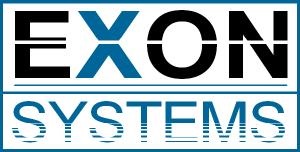Cyber Security
Cyber Security
Proactive Cybersecurity Strategies to Protect Your Digital Assets
Implementing a comprehensive cybersecurity solution involves a multi-layered approach to protect your organization’s digital assets, sensitive data, and infrastructure from various threats. Here’s a guide to implementing a cybersecurity solution:
1. Risk Assessment and Planning
Conduct a thorough risk assessment to identify potential cybersecurity risks, vulnerabilities, and threats to your organization.
Develop a cybersecurity strategy and roadmap based on the assessment findings, outlining priorities, goals, and resource allocation.
2. Security Policies and Procedures
Establish clear security policies and procedures governing the use of IT resources, access controls, data handling, incident response, and compliance requirements.
Ensure policies are regularly reviewed, updated, and communicated to employees, contractors, and third-party vendors.
3. Perimeter Defense Procedure
Implement firewall solutions to monitor and control inbound and outbound network traffic, enforcing security policies and protecting against unauthorized access and malware.
Deploy intrusion detection/prevention systems (IDS/IPS) to detect and block suspicious or malicious network activity.
4. Endpoint Protection
Deploy endpoint security solutions such as antivirus/antimalware software, endpoint detection and response (EDR) tools, and mobile device management (MDM) solutions to protect endpoints (e.g., desktops, laptops, mobile devices) from malware, phishing, and other threats.
Enable endpoint encryption to protect sensitive data stored on devices from unauthorized access.
5. Identity and Access Management (IAM)
Implement strong authentication mechanisms such as multi-factor authentication (MFA) to verify the identity of users accessing systems and applications.
Use IAM solutions to manage user identities, access rights, and privileges, enforcing the principle of least privilege and ensuring proper access controls are in place.
6. Data Protection and Encryption
Encrypt sensitive data at rest and in transit using encryption algorithms and protocols to prevent unauthorized access and data breaches.
Implement data loss prevention (DLP) solutions to monitor, classify, and protect sensitive data from being leaked or exfiltrated.
7. Security Monitoring and Incident Response
Deploy security information and event management (SIEM) solutions to collect, correlate, and analyze security events and logs from various sources.
Establish incident response procedures and workflows to detect, investigate, and mitigate security incidents and breaches in a timely manner.
8. Security Awareness Training
Provide regular security awareness training to employees to educate them about cybersecurity risks, best practices, and how to recognize and respond to threats such as phishing attacks and social engineering tactics.
Conduct simulated phishing exercises to test employee awareness and responsiveness to phishing attempts.
9. Third-Party Risk Management
Assess and manage the cybersecurity risks associated with third-party vendors, suppliers, and service providers that have access to your organization’s systems, data, or networks.
Establish security requirements and perform due diligence when selecting and contracting with third-party vendors.
10. Continuous Improvement and Compliance
Continuously monitor, evaluate, and improve your cybersecurity posture based on emerging threats, industry best practices, and regulatory requirements.
Ensure compliance with relevant cybersecurity regulations, standards, and frameworks applicable to your industry and geography (e.g., GDPR, HIPAA, PCI DSS).

